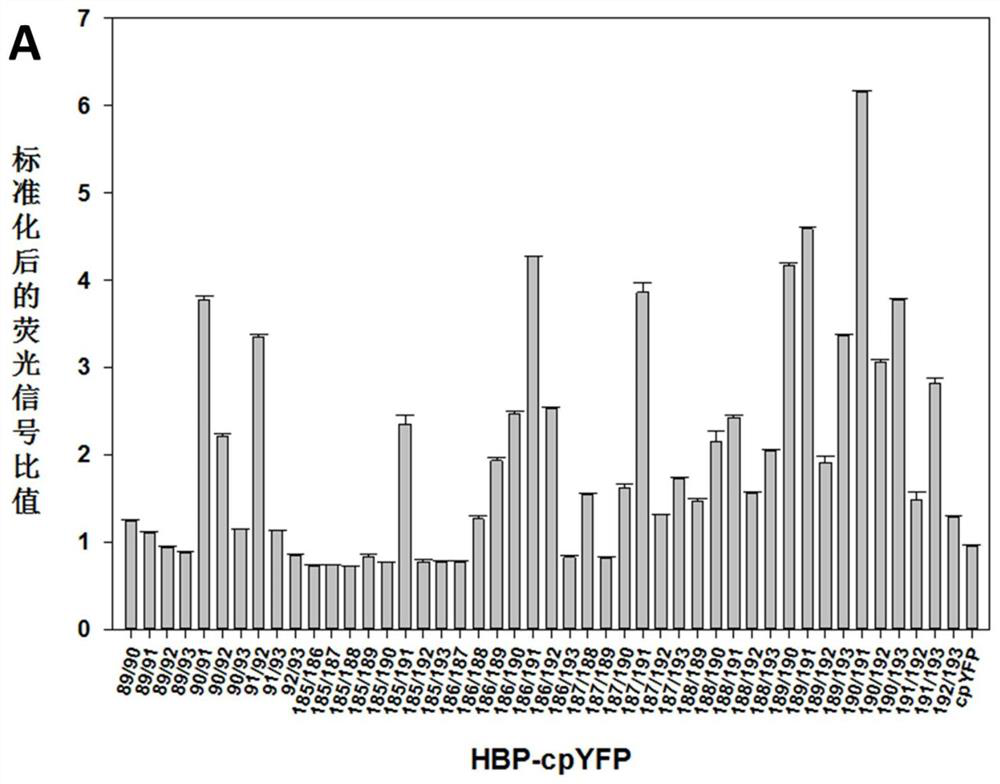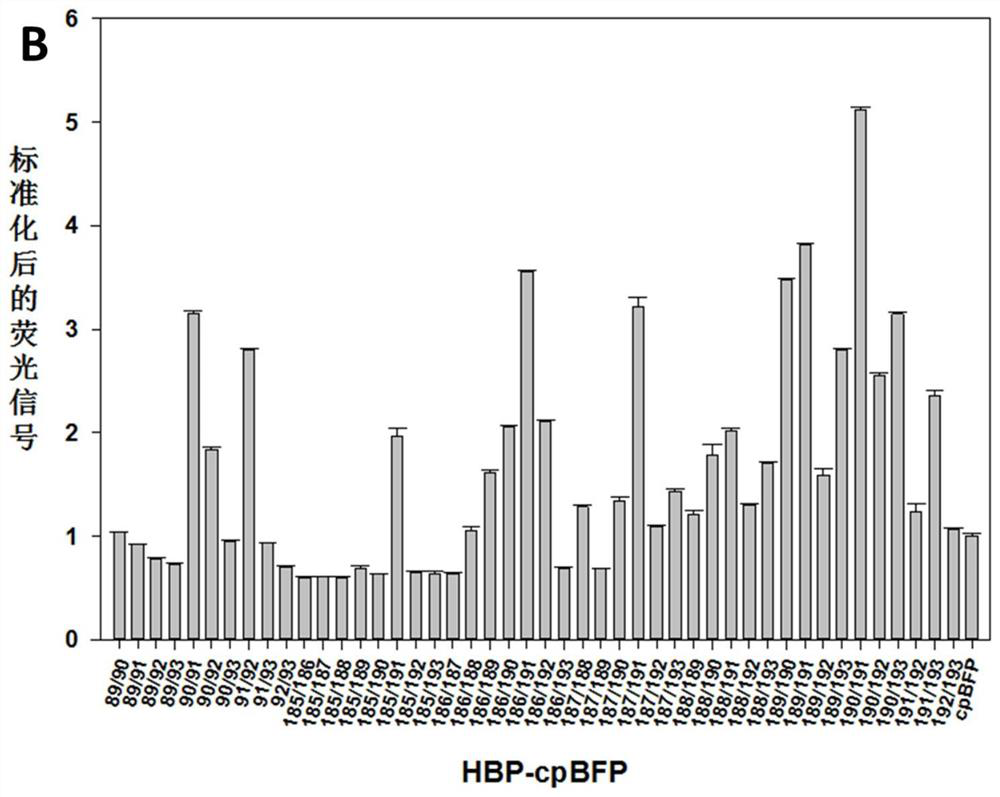A kind of histidine fluorescent probe and its preparation method and application
A fluorescent probe, histidine technology, applied in the field of bioengineering, can solve the problems of inability to detect cells in real time and accurately
- Summary
- Abstract
- Description
- Claims
- Application Information
AI Technical Summary
Problems solved by technology
Method used
Image
Examples
preparation example Construction
[0039] The present invention also provides a preparation method for the above-mentioned histidine fluorescent probe, comprising the following steps: 1) linking the nucleotide sequence encoding the B1-A-B2 type probe with the pRSETb vector to obtain recombinant expression in Escherichia coli 2) transferring the recombinant expression vector of Escherichia coli into host cells; 3) cultivating the host cells and isolating the histidine fluorescent probe.
[0040] In the present invention, the synthesis of the nucleotide sequence encoding the B1-A-B2 type probe adopts the method of PCR amplification or artificial synthesis. When the PCR amplification method is used, primers are designed according to the nucleotide sequence described in the present invention, and a commercially available cDNA library or a cDNA library prepared by a conventional method known to those skilled in the art is used as a template to amplify. When the nucleotide sequence is larger than 2500bp, it is prefer...
Embodiment 1
[0120] Construction of pRSETb-HBP plasmid
[0121] The HisJ gene in the Escherichia coli gene was amplified by PCR, and the PCR product was recovered after gel electrophoresis and digested with BamHI and HindIII, and the pRSETb vector was subjected to the same double digestion. After ligation with T4 DNAligase, the ligation product was transformed into MachI, and the transformed MachI was spread on LB plates (ampicillin 100ug / mL), and cultured at 37°C overnight. After plasmid extraction of the growing MachI transformants, PCR identification was performed. After the positive plasmid is correctly sequenced, the subsequent plasmid construction is carried out.
[0122] The primer sequences for constructing the pRSETb-HBP plasmid are shown in Seq ID NO.39-40.
[0123] Plasmid construction and detection of different insertion sites of pRSETb-HBP-cpFP fluorescent probe
[0124] In this example, we selected 89 / 90, 89 / 91, 89 / 92, 89 / 93, 90 / 91, 90 / 92, 90 / 93, 91 / 92 based on the HBP cry...
Embodiment 2
[0132] According to the method in Example 1, cpYFP was replaced by blue fluorescent protein cpBFP, which was fused into HBP to construct a histidine blue fluorescent protein fluorescent probe. The result is as image 3 As shown, the results of fluorescence detection showed that 90 / 91, 186 / 191, 187 / 191, 189 / 190, 189 / 191, 190 / 191, and 190 / 193 responded more than 3 times to histidine.
PUM
 Login to View More
Login to View More Abstract
Description
Claims
Application Information
 Login to View More
Login to View More - R&D
- Intellectual Property
- Life Sciences
- Materials
- Tech Scout
- Unparalleled Data Quality
- Higher Quality Content
- 60% Fewer Hallucinations
Browse by: Latest US Patents, China's latest patents, Technical Efficacy Thesaurus, Application Domain, Technology Topic, Popular Technical Reports.
© 2025 PatSnap. All rights reserved.Legal|Privacy policy|Modern Slavery Act Transparency Statement|Sitemap|About US| Contact US: help@patsnap.com



